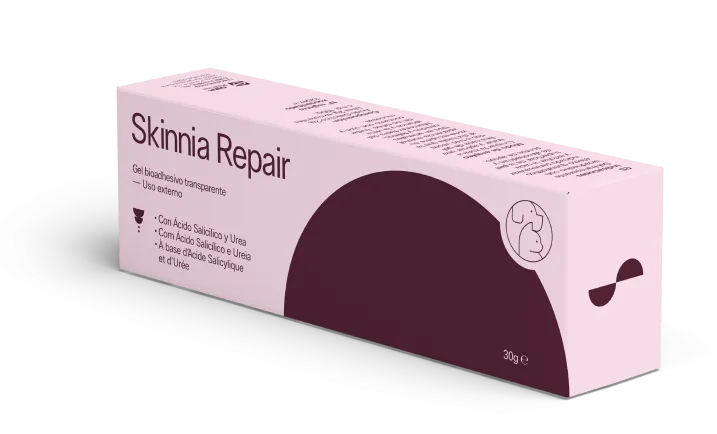PATHOLOGIES WE TREAT
Seborrheic dermatitis

Introduction
Seborrheic dermatitis is a chronic skin condition affecting both dogs and cats, characterized by an imbalance in sebum production, which can result in dry or oily skin, flaking, and a foul odor. Although not always painful, this condition can cause significant discomfort for pets and lead to secondary infections if left untreated. This article explores the causes, symptoms, and available treatments for this condition.
Causes
Seborrheic dermatitis can be primary or secondary, and distinguishing between the two is key to proper treatment.
- Primary seborrheic dermatitis: Genetic in origin, it is more common in certain dog breeds such as Cocker Spaniels, Basset Hounds, and West Highland White Terriers. Cats can also be affected, though it is less common.
- Secondary seborrheic dermatitis: Can develop as a result of underlying conditions, including:
- Allergies (environmental or food-related).
- Bacterial or fungal infections.
- Parasites such as fleas or mites.
- Endocrine diseases like hypothyroidism in dogs.
Symptoms
Seborrheic dermatitis primarily affects the skin and coat and may present as either dry seborrhea (seborrhea sicca) or oily seborrhea (seborrhea oleosa). In some cases, pets may display a combination of both. Symptoms include:
- Dry or oily skin: Depending on the type, the skin may be flaky and dry or oily and greasy to the touch.
- Flaking (dandruff): Seborrhea often appears as small whitish flakes in the coat. In cats, this is commonly seen at the base of the tail.
- Itching (pruritus): Causes excessive scratching and licking, increasing the risk of secondary infections.
Diagnosis
Diagnosing seborrheic dermatitis in pets involves a physical examination and symptom analysis. To determine whether it is primary or secondary, the veterinarian may perform tests such as:
- Blood tests to rule out underlying diseases.
- Skin cultures and microscopic evaluations to identify infections or abnormalities.
- Skin scrapings to rule out mites.
- Biopsies for deeper analysis in complex cases.
Treatment
Treatment depends on whether the seborrheic dermatitis is primary or secondary, with a focus on addressing any underlying conditions in secondary cases.
- Topical treatment: Key to alleviating symptoms, using products with keratolytic effects like Skinnia Repair, which exfoliates and softens the skin, removes dead cells, and maintains proper hydration to support regeneration.
- Treatment for secondary infections: Topical antibiotics or antifungals may be required for infections.
- Systemic treatment: May include omega-3 and omega-6 supplements to strengthen the skin and coat, and in severe cases, retinoids to normalize sebum production.
Prevention
While seborrheic dermatitis is not always preventable, certain measures can help reduce the severity of symptoms:
- Regular bathing: Use specific shampoos to keep the skin healthy.
- Frequent brushing: Removes excess dandruff and evenly distributes natural sebum.
- Topical products: Maintaining hydrated and exfoliated skin with products like Skinnia Repair can improve skin condition and prevent relapses.
- Allergy and underlying condition control: Managing these effectively can reduce predisposition to seborrhea, improving the pet’s quality of life.
Miller, W. H., Griffin, C. E., & Campbell, K. L. (2012). Muller and Kirk's Small Animal Dermatology (7th ed.). Elsevier Health Sciences.
Rosenkrantz, W. (2006). Practical applications of topical therapy for allergic, infectious, and seborrheic disorders. Clinical techniques in small animal practice, 21(3), 106-116.
Borda, L. J., & Wikramanayake, T. C. (2015). Seborrheic dermatitis and dandruff: a comprehensive review. Journal of clinical and investigative dermatology, 3(2).
Bensignor, E., & Dip, E. C. V. D. Seborrhea.

Bioadhesive transparent gel with keratolytic effect indicated for smoothing and exfoliating the surface layer of the skin of pads and pressure points.